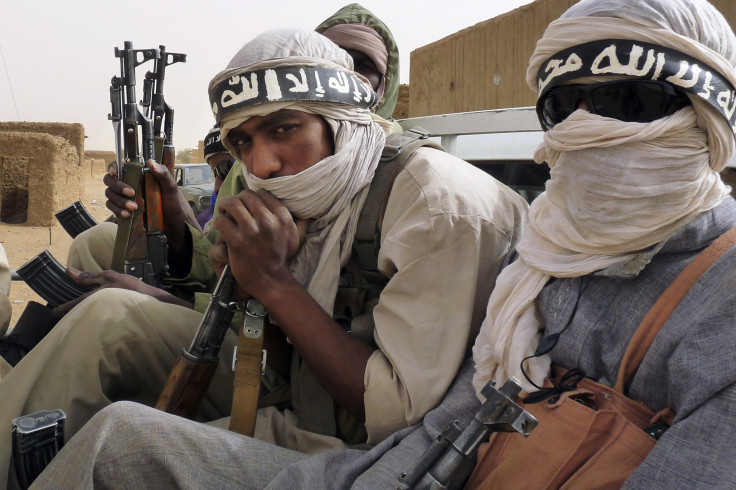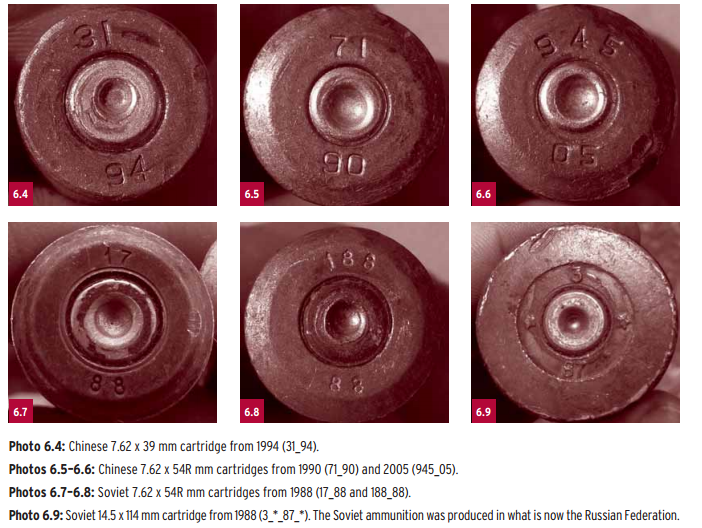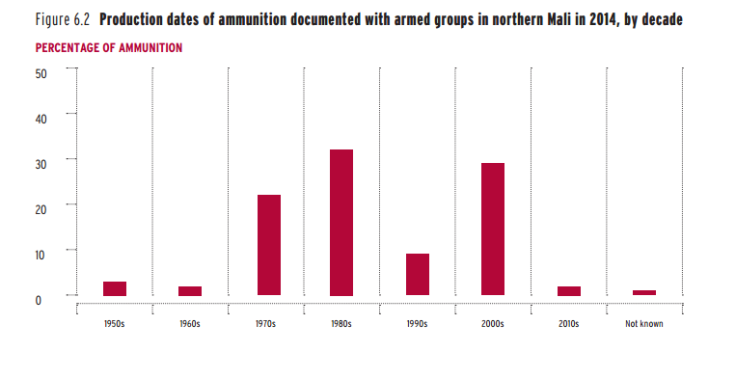Jihadist Groups In Northern Mali May Be Better Armed Than Military: 2015 Small Arms Survey

Rebel groups and jihadists in northern Mali have better, larger weapons than they did a decade ago, and data show they’re well on their way to being better equipped than the country’s military. This could pose a growing headache for the international effort to stop the spread of jihadists in the region, where radical Islamists have emerged as a growing threat after splitting from an armed, pro-independence movement.
“Since falling out with secessionist rebels, violent jihadists have emerged as perhaps the most pressing security concern in northern Mali,” reads the 2015 Small Arms Survey report, released on Monday. “Countering these groups will require dynamic responses from the international community, and the record so far has not been promising.”
The current instability in Mali began in 2012, when a rebel group made of ethnic Tuareg and Arab fighters, calling itself the Mouvement National pour la Libération de l’Azawad (MNLA) -- or National Movement for the Liberation of Azawad, as they refer to the region -- led a campaign that left 82 Malian soldiers dead. Their official goal was independence or autonomy for Mali’s largely desert northern region, which has felt left out of policies made in the southern capital of Bamako since the country gained independence from France in 1960.
Some fighters also sought to establish Islamic law in the region, and eventually this caused a rift between rebels once united against the government.
“Jihadist combatants have been present in northern Mali for at least a decade, but in 2012 observers saw them emerge as a dominant group of fighters,” the report reads. These groups include al Qaeda in the Islamic Maghreb (AQIM), which generates money from ransoms and taxes on people passing through its territory. Ansar Dine, another major group, grew from a Tuareg rebel group in northern Mali. Most recently, a new group called the Macina Liberation Movement has also made itself known.

As the resulting clashes became increasingly deadly, the United Nations sent peacekeeping troops to Mali in December 2012. And in 2013, France also contributed troops to stop jihadists who were advancing south. Though the offensive drove them away from major city centers, these groups were not finished -- and now they’re back, with better weapons.
“As in many other African conflicts, armed violence in northern Mali is carried out predominantly with small arms and light weapons, although insurgents have also accessed some larger-caliber weapons,” the report says, noting that these groups currently hold many large conventional weapons systems such as recoilless guns and autocannons. And they have at least 81 medium-weight mortars and man-portable air-defense systems, or MANPADS -- shoulder-launched missiles that can bring down aircraft -- in their possession, according to the survey.
After Mali gained independence, it procured much of its military equipment from the Soviet Union and members of the Warsaw Pact. The government also had strong ties with China since the 1960s.

“These interactions are mirrored in the study findings, which show that the bulk of material in northern Mali consists of Cold War-era production from the former Eastern Bloc and China,” the report says, noting that about 54 percent of all ammunition surveyed was produced in the 1970s and 1980s in Russia or China. Also documented were some Belgian and Portuguese-made assault rifles from the 1950s and 1970s, while light weapons found in Mali included American heavy machine guns from the 1970s. The newest guns come from China, Bulgaria and Sudan.

Regardless of the source, the data also show that rebel and jihadist groups are getting stronger than the government. Weapons such as cannon and rocket launchers were typically only used by military forces and weren’t present among rebel fighters a decade ago.
“Moreover, insurgents use material that is not known to be in use by the Malian army, suggesting that they secured it via illicit trafficking into northern Mali from abroad rather than through battlefield capture or the looting of army stockpiles,” the report says.
The changes mean insurgents are able to carry out more devastating campaigns than before, and could overpower the military. And while peace agreements are ongoing, the report suggests that the government needs to focus on improving the military’s capacity to fight back.
“Of particular note is the jihadist possession of MANPADS, which, if operational, could be used against helicopters and planes, threatening lines of supply and movement of French and international forces in northern Mali,” the report says.

While there are rumors that certain states had directly sent weapons to these groups, survey researchers found no direct evidence of this. Many of these weapons were likely sourced from stockpiles in Libya and Ivory Coast. In many cases they are trafficked through convoys of 4x4 vehicles through the Sahara using ancient trade routes. In some cases, convoys have left Mali for Libya and returned laden with arms and ammunition, according to the report. Organizers of this trade are both rebels and jihadists as well as established criminal networks.To bring security, researchers suggest that policymakers focus on preventing these weapons from entering the country in the first place.
“While the jihadist campaign presents different challenges, it shares with the secessionist rebellion a reliance on ongoing, and apparently expanding, access to small arms and light weapons,” the report says. “Identifying ways of preventing the tools of armed violence from reaching these groups should be among the prioritized efforts designed to bring security to northern Mali.”
© Copyright IBTimes 2024. All rights reserved.






















